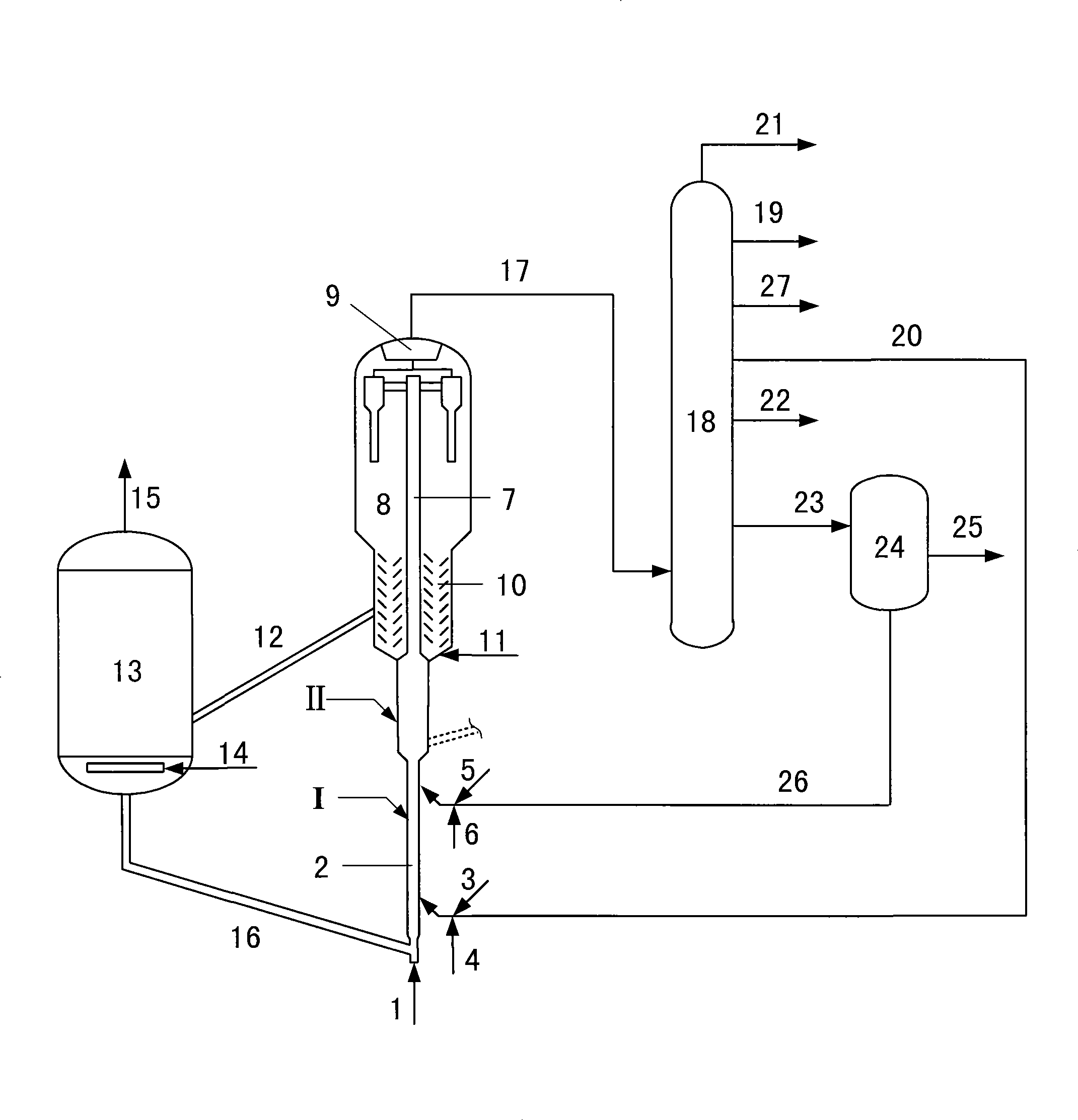Catalytic conversion method of propylene preparation
A catalytic conversion method and propylene technology, applied in chemical recovery, organic chemistry, hydrocarbon cracking and hydrocarbon production, etc., can solve problems such as increased dry gas yield, low propylene yield, and underutilization of low-carbon olefin potential content, reaching The effect of increased selectivity
- Summary
- Abstract
- Description
- Claims
- Application Information
AI Technical Summary
Problems solved by technology
Method used
Image
Examples
Embodiment 1
[0049] This embodiment is tested according to the flow process of accompanying drawing, raw material oil A is directly used as the raw material of catalytic cracking, is tested on the medium-sized device by riser reactor, the raw material that is easy to crack enters the middle and upper part of reaction zone I, and the raw material that is difficult to crack enters At the bottom of the reaction zone I, at the bottom of the reaction zone I, the difficult-to-crack raw material is heated at a reaction temperature of 640°C and a weight hourly space velocity of 180h -1 , the weight ratio of catalytic cracking catalyst to raw material is 60, and the weight ratio of steam to raw material is 0.20 to carry out the cracking reaction; in the upper middle part of reaction zone I, the raw material that is easy to crack is reacted at a reaction temperature of 580°C and a weight hourly space velocity of 60h -1 , the weight ratio of catalytic cracking catalyst to raw material is 10, and the w...
Embodiment 2
[0058] This embodiment is the same as the test device of Example 1. The raw material oil B is directly used as the raw material for catalytic cracking, and the test is carried out on a medium-sized device with a riser reactor. The easily cracked raw material enters the middle and upper part of reaction zone I, and the difficultly cracked raw material Enter the bottom of the reaction zone I, at the bottom of the reaction zone I, the hard-to-crack raw material is heated at a reaction temperature of 640°C and a weight hourly space velocity of 180h -1 , the weight ratio of catalytic cracking catalyst to raw material is 60, and the weight ratio of steam to raw material is 0.20 to carry out the cracking reaction; in the upper middle part of reaction zone I, the raw material that is easy to crack is reacted at a reaction temperature of 580°C and a weight hourly space velocity of 60h -1 , the weight ratio of catalytic cracking catalyst to raw material is 10, and the weight ratio of wat...
PUM
 Login to View More
Login to View More Abstract
Description
Claims
Application Information
 Login to View More
Login to View More - R&D
- Intellectual Property
- Life Sciences
- Materials
- Tech Scout
- Unparalleled Data Quality
- Higher Quality Content
- 60% Fewer Hallucinations
Browse by: Latest US Patents, China's latest patents, Technical Efficacy Thesaurus, Application Domain, Technology Topic, Popular Technical Reports.
© 2025 PatSnap. All rights reserved.Legal|Privacy policy|Modern Slavery Act Transparency Statement|Sitemap|About US| Contact US: help@patsnap.com

